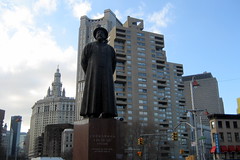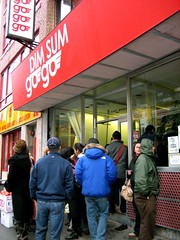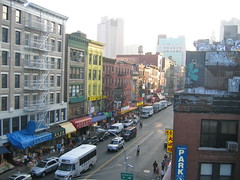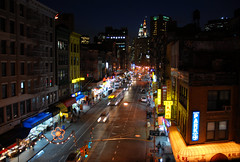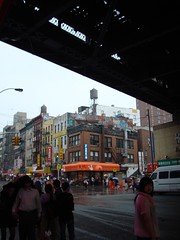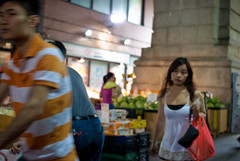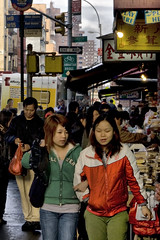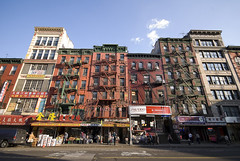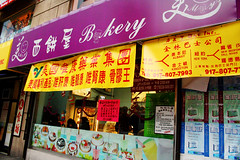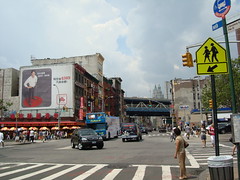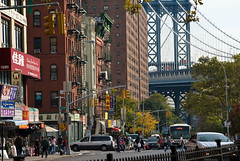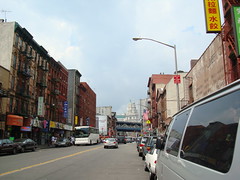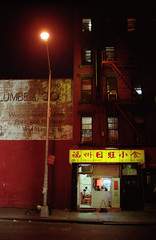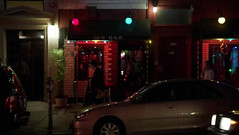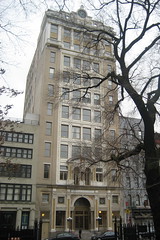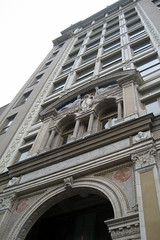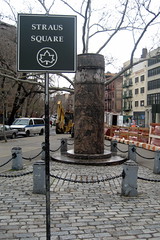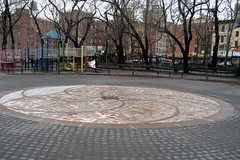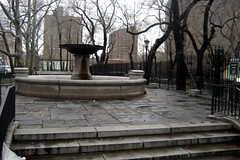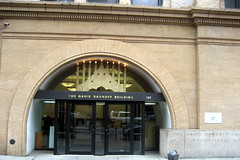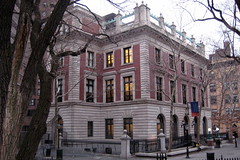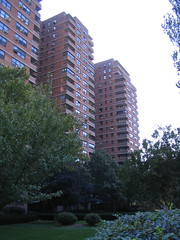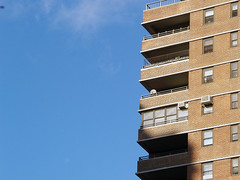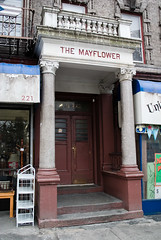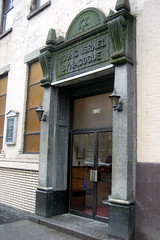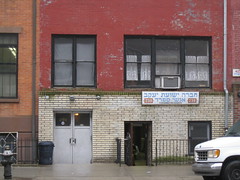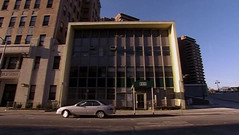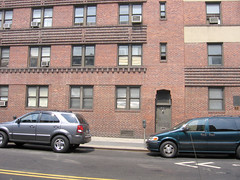South:Kimlau Square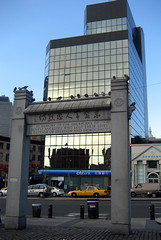
Corner: An island in Chatham Square named for Benjamin Ralph Kimlau, a Chinese-American lieutenant in the Army Air Force who died on a bombing mission near New Guinea in World War II; he's the namesake of Chinatown's American Legion post, the largest in New York City. The square has a memorial arch for Chinese-Americans
who "lost their lives in defense of freedom and democracy,"
5: Dim Sum Go Go 7: Trans World Buddhist Association 9: Upstairs is the Cuban Chinese Benevolent Association. 11 (corner): The China Glory Tower, a 15-story glass-and-limestone office building built in 1990. A branch of HSBC, the Hongkong Shanghai Bank Company, is on the ground floor. Formerly the Pagoda movie theater was here. |
E
|
North:
Corner (17 Chatham Square): A pagoda-like building
that is also known as
2 Catherine Street.
2 (corner): A
10-story building that went up c. 1900. Among
the businesses here is
Food Sing 88 Corp,
a
well-regarded ramen house.
|
